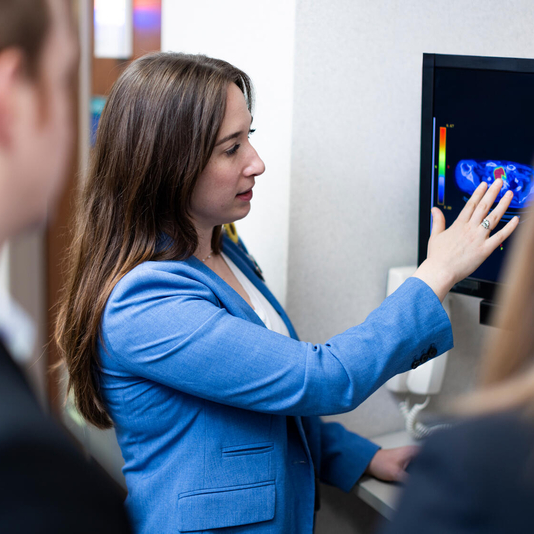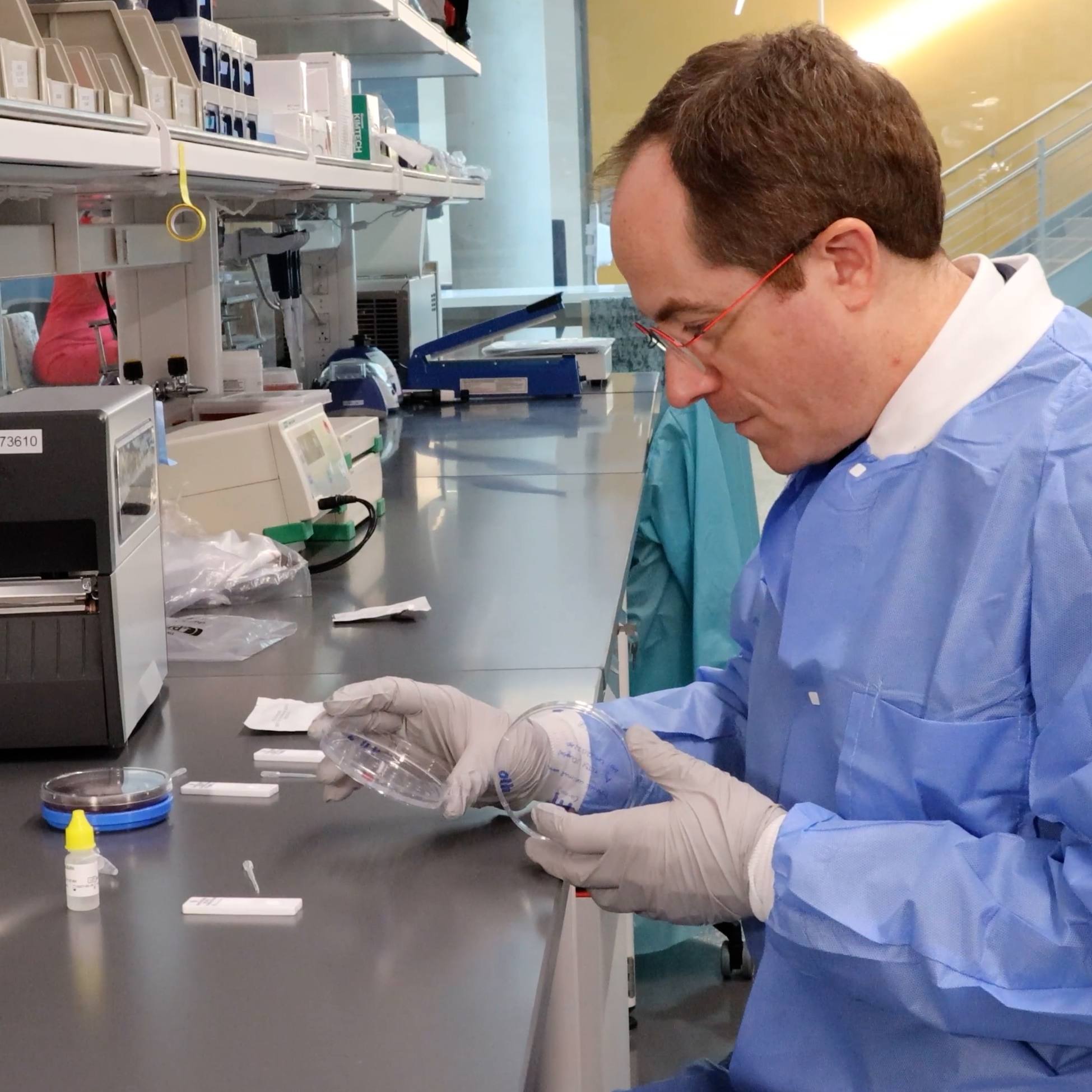-
Mayo Clinic in space: A history of discovery

Mayo Clinic has made important contributions to space medicine and research since the dawn of the U.S. space program, and prior to that with aeronautical research during World War II.
“Historically, Mayo Clinic has been closely involved in aerospace medicine,” says Jan Stepanek, M.D., director of Aerospace Medicine on Mayo Clinic’s Arizona campus. “Former Mayo staff members set up the first testing of the seminal astronaut corps, and Mayo researchers did a lot of work for the moon and space shuttle missions.
“Our involvement goes back to the beginning of the U.S. space program and continues to the present day.”
A sampling of Mayo Clinic’s work in space medicine includes:
- 1960: Mayo Clinic received grants from the U.S. Air Force and NASA to conduct a series of experiments to study the effect of acceleration during liftoff. Mayo’s research, related to the force of gravity during acceleration, influenced the horizontal position of seats for the Mercury spaceflight program — which sent the first American astronauts to space — as well as the Gemini and Apollo programs.
- 1993: Bernard A. Harris Jr., M.D., became the first Mayo Clinic alumnus to travel to space. He was selected into NASA’s astronaut program in 1990. After two years of training, he climbed aboard the shuttle Columbia for his first 10-day mission. He made history by performing the first physical exam in space. Dr. Harris came to Mayo Clinic after medical school to complete a residency in internal medicine. His experience at Mayo rekindled his childhood dream to become an astronaut.
- 2017: A research team led by Abba Zubair, M.D., Ph.D., who specializes in transfusion medicine and regenerative medicine on Mayo Clinic’s Florida campus, sent several types of stem cells into space aboard the SpaceX-9 mission to the International Space Station (ISS). The study investigated how microgravity may affect stem cells’ ability to multiply. Previous studies on Earth suggested the conditions of space might yield quantities of stem cells large enough to be used as therapies for conditions such as stroke.
- 2018: Mayo Clinic researchers, led by Dr. Zubair, sent a large sample of stem cells to the ISS to investigate the effects of long-term cosmic radiation on astronauts. The sample hitched a ride on the SpaceX-16 resupply mission, which took off Dec. 5, 2018, from the Kennedy Space Center in Cape Canaveral, Florida. The experiment involved 300 million frozen stem cells, which remained untouched in multiple vials at minus 130 degrees Celsius aboard the ISS for an entire year. The cells were sent back to Earth — still frozen — via a return capsule to be tested at Mayo Clinic.
- 2019: Dr. Stepanek was the primary author of an article in The New England Journal of Medicine that says space medicine will have to adapt to a time when commercial spaceflight companies play a larger role. “Civilian spaceflight is a new frontier. As a frontier, there is a paradigm shift from highly trained, exceptionally fit astronauts to the broader public,” Dr. Stepanek says. “There are a lot of unknowns and reasons to be cautious.”
- 2021: Among other Mayo Clinic aerospace research underway, Alejandro A. Rabinstein, M.D., medical director of Mayo Clinic’s Neuroscience Intensive Care Unit, and his team are working with NASA to learn more about the effects of extended space travel, such as long trips to Mars, on the human body. Dr. Rabinstein has been investigating the feasibility of putting astronauts into a hypothermic torpor for extended space travel, which could limit metabolic demands on the body and make the trip more psychologically tolerable.
- 2022: Mayo Clinic research is once again headed to space — Mayo Clinic Philanthropic Partner Larry Connor took part in Axiom Space’s first private mission to the ISS in April. He worked with Mayo researchers to identify important research projects in the fields of aging and regenerative medicine to conduct in the microgravity environment of space. Larry was one of four civilians from around the world to take part in the flight. Michael F. Harrison, M.D., Ph.D., an emergency medicine and critical care physician on Mayo Clinic’s Florida campus, will served as a flight surgeon for the mission. It’s a role Dr. Harrison has taken on for four previous commercial spaceflights. As flight surgeon, Dr. Harrison monitors the astronauts’ health during takeoff and landing and mitigate risk to ensure they are as safe as possible.
The Experiential Learning Center at Mayo Clinic in Florida provides training for the medical teams responsible for launches and astronaut recovery at the John F. Kennedy Space Center on Florida’s east coast.
This article was originally published in Mayo Clinic Magazine.
Read more about Mayo Clinic in Space: Learn how Mayo is conducting research to make space travel safer.







